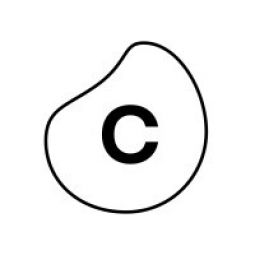技术
- 传感器 - 流量计
- 传感器 - 液体检测传感器
适用行业
- 石油和天然气
- 公用事业
用例
- 时间敏感网络
- 资产跟踪
关于客户
Neste是全球最大的可再生柴油和可持续航空燃料生产商,帮助企业创造更光明、更智能的未来。该公司规模庞大,拥有多个销售部门、复杂的物流链和广泛的解决方案。 Neste 致力于可持续发展,并将技术作为积极转型的关键驱动力。该公司旨在通过引入智能业务流程来支持客户实现可持续发展目标。 Neste 面临的首要问题之一是订单到现金流程中的发票交付周期缓慢,这影响了他们的现金流和客户体验。
挑战
Neste 是全球最大的可再生柴油和可持续航空燃料生产商,其订单到现金流程中的发票交付周期缓慢,面临着重大挑战。 Neste 经营规模庞大,拥有多个销售部门、复杂的物流链和广泛的解决方案,因此很难发现其运营中的低效率问题。缺乏对业务流程的端到端可见性和实时监控是一个主要问题。缓慢的发票交付时间不仅影响了他们的现金流,还影响了客户体验,因为客户抱怨延误。我们面临的挑战是找到一种解决方案,能够提供端到端业务流程的实时可见性,并帮助识别对 Neste 的发票交付周期产生负面影响的关键因素。
解决方案
Neste 求助于 Celonis EMS,特别是其可视化和日常管理功能,来解决他们的发票交付时间问题。第一步是确定流程瓶颈。使用 Celonis,Neste 获得了所需的可见性,以确定对其发票提前期产生负面影响的关键因素。第二步是确定并支持正确的 KPI。 Neste 使用 Celonis 平台创建绩效仪表板,帮助他们可视化订单到现金流程并实时衡量绩效。他们确定了关键的 KPI,包括票务交付周期、发票交付周期和客户取消发票。这些 KPI 用于设定半年度目标,并在参与订单到现金流程的每个团队之间共享。第三步是使用日常管理功能让每个团队都步入正轨。 Neste 使用 Celonis EMS 的日常管理功能来组织每周两次的会议,并使每个团队都步入正轨。该平台的票务和发票到期清单用于在每次会议之前准备任务,使团队能够审查任何待处理的任务,查看所需的操作,并与相关利益相关者沟通以使流程回到正轨。
运营影响
数量效益

Case Study missing?
Start adding your own!
Register with your work email and create a new case study profile for your business.
相关案例.

Case Study
Taking Oil and Gas Exploration to the Next Level
DownUnder GeoSolutions (DUG) wanted to increase computing performance by 5 to 10 times to improve seismic processing. The solution must build on current architecture software investments without sacrificing existing software and scale computing without scaling IT infrastructure costs.

Case Study
IoT Solutions for Smart City | Internet of Things Case Study
There were several challenges faced: It is challenging to build an appliance that can withstand a wide range of voltage fluctuations from as low at 90v to as high as 320v. Since the device would be installed in remote locations, its resilience was of paramount importance. The device would have to deal with poor network coverage and have the ability to store and re-transmit data if networks were not available, which is often the case in rural India. The device could store up to 30 days of data.

Case Study
Automation of the Oguz-Gabala-Baku water pipeline, Azerbaijan
The Oguz-Gabala-Baku water pipeline project dates back to plans from the 1970’s. Baku’s growth was historically driven by the booming oil industry and required the import of drinking water from outside of the city. Before the construction of the pipeline, some 60 percent of the city’s households received water for only a few hours daily. After completion of the project, 75 percent of the two million Baku residents are now served around the clock with potable water, based on World Health Organization (WHO) standards. The 262-kilometer pipeline requires no pumping station, but uses the altitude differences between the Caucasian mountains and the capital to supply 432,000 m³/d to the Ceyranbatan water reservoir. To the people of Baku, the pipeline is “the most important project not only in 2010, but of the last 20 years.”

Case Study
GPRS Mobile Network for Smart Metering
Around the world, the electricity supply industry is turning to ‘smart’ meters to lower costs, reduce emissions and improve the management of customer supplies. Smart meters collect detailed consumption information and using this feedback consumers can better understand their energy usage which in turn enables them to modify their consumption to save money and help to cut carbon emissions. A smart meter can be defined in many ways, but generally includes an element of two-way communication between the household meter and the utility provider to efficiently collect detailed energy usage data. Some implementations include consumer feedback beyond the energy bill to include online web data, SMS text messages or an information display in consumers’ premises. Providing a cost-effective, reliable communications mechanism is one of the most challenging aspects of a smart meter implementation. In New Zealand, the utilities have embraced smart metering and designed cost effective ways for it to be implemented. The New Zealand government has encouraged such a move to smart metering by ensuring the energy legislation is consistent with the delivery of benefits to the consumer while allowing innovation in this area. On the ground, AMS is a leader in the deployment of smart metering and associated services. Several of New Zealand’s energy retailers were looking for smart metering services for their residential and small business customers which will eventually account for over 500,000 meters when the multi-year national deployment program is concluded. To respond to these requirements, AMS needed to put together a solution that included data communications between each meter and the central data collection point and the solution proposed by Vodafone satisfied that requirement.

Case Study
Remote Wellhead Monitoring
Each wellhead was equipped with various sensors and meters that needed to be monitored and controlled from a central HMI, often miles away from the assets in the field. Redundant solar and wind generators were installed at each wellhead to support the electrical needs of the pumpstations, temperature meters, cameras, and cellular modules. In addition to asset management and remote control capabilities, data logging for remote surveillance and alarm notifications was a key demand from the customer. Terra Ferma’s solution needed to be power efficient, reliable, and capable of supporting high-bandwidth data-feeds. They needed a multi-link cellular connection to a central server that sustained reliable and redundant monitoring and control of flow meters, temperature sensors, power supply, and event-logging; including video and image files. This open-standard network needed to interface with the existing SCADA and proprietary network management software.




